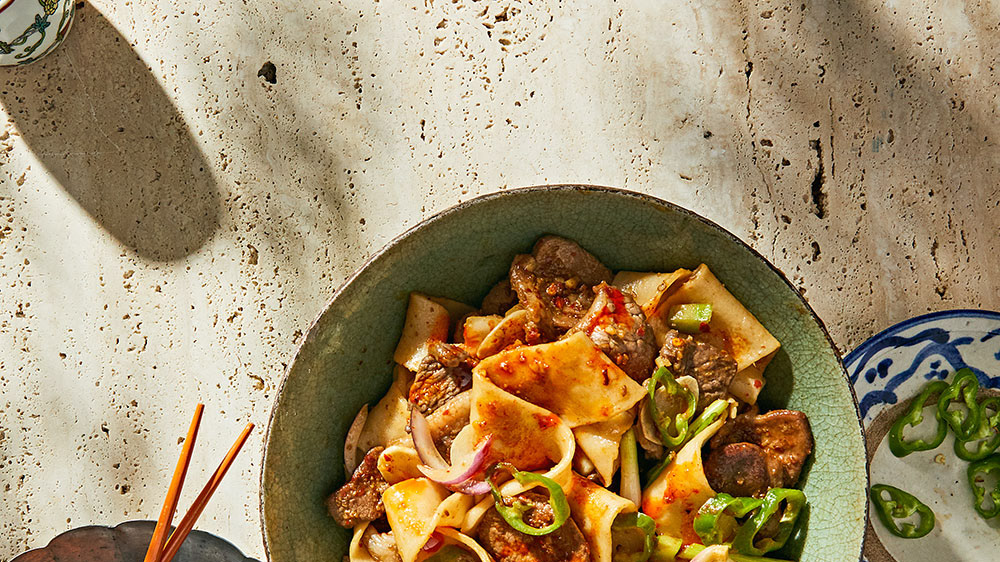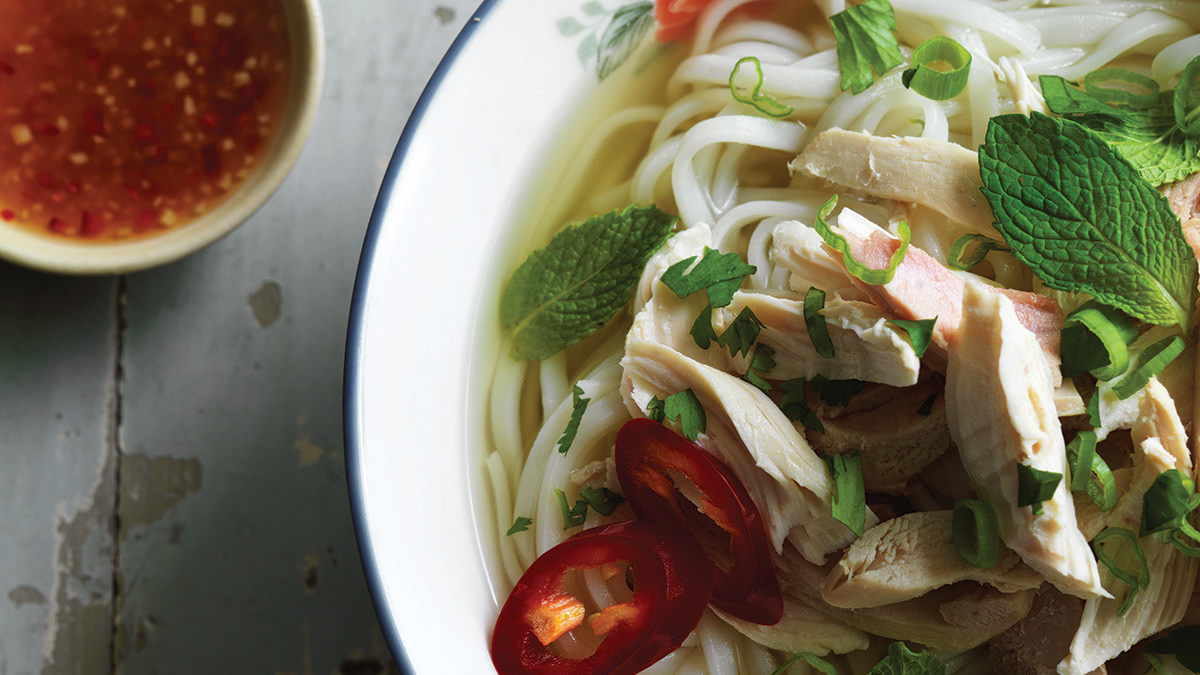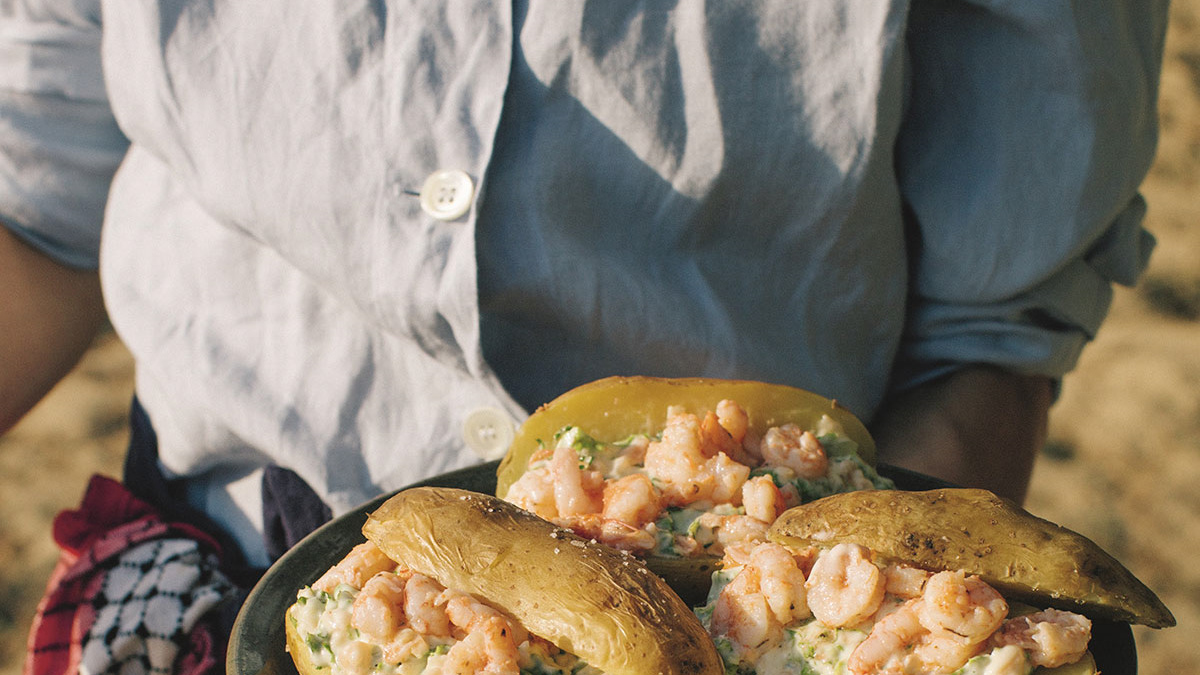PHOTO: Running Press
Laura Brehaut/Postmedia News
Originally published on August 22, 2012; canada.com
Originally published on August 22, 2012; canada.com
Author and food blogger Marisa McClellan was initially drawn to canning and preserving because it produces something that endures – there’s a finished product that you can enjoy over time. Her mom taught her the basics but it wasn’t until she started shopping at farmers’ markets that she realized she could buy produce in season and make it last throughout the year.
“I had quite a lot of trial and error in my own kitchen,” McClellan says. “I think everyone goes through this when they start making jam and preserves. They think, ‘Oh, I want to do this but I want to do it in a lower sugar way. I can cut the sugar by half. This recipe can’t possibly need this much sugar!’ and so you cut it down by half or more and then at the end you’re like, ‘Why do I have syrup? Why is this so runny? Why doesn’t this taste good?'” McClellan started her popular blog Food in Jars in 2009 and feels that one of the reasons readers find her blog and her voice so appealing is that she has made all of the same mistakes they’re making now, and can share the knowledge that she has gained through experience.
“I’m a big believer in generosity and sharing,” McClellan says. In this spirit, she includes a list of resources on her blog, as well as some of her favourite canning books for readers who want to delve deeper. Her readers and blog have given back to her as well, helping her to gain the confidence needed to write her first cookbook, Food in Jars: Preserving in Small Batches Year Round (Running Press, 2012). “I don’t think I could have gone into writing a book like this without having written a blog first for a long period of time because it allowed me to develop the voice and the feel that I was looking for,” McClellan explains. “I think the blog really helped me feel like yes, I do have a valuable contribution to make in this area and that if I wrote a book it might just be a little bit successful.”
McClellan’s book features diverse recipes for food in jars – from jams and chutneys to granolas and flavour-infused sea salts – written with tiny kitchens in mind. The small-batch recipes are ideal for those who don’t have a lot of storage space, and represent a good balance between the sweet and the savoury. “I really am pleased with the assortment of recipes,” McClellan says. “I didn’t want it to be just a jam book. Even though I love the art of making jam, one cannot live on jam alone so I really tried to keep a good balance.”
As the granolas and flavoured salts would lead you to believe, the book is more than recipes for preserves and conserves. McClellan stays true to both the name of her blog and book, and includes other homemade foods that can be stored in jars, such as nut butters, baking mixes and stocks. “I really wanted to have a few other things beyond just the canning stuff in there so that, even if someone is scared of canning there might be something in the book that would resonate with them,” she says. “I feel like it’s a good book for people who want to start exploring more homemade things.”
McClellan’s biggest tip for prospective preservers is to accept that your pantry might not live all in the same place. “My pantry is in my kitchen, yes, but then it’s also in a cabinet in my living room. Some of my canned goods live in boxes under my dresser in my bedroom,” she says. “So I think the only tip that I can offer is be flexible – be willing to store your stuff wherever you can… just don’t forget about it.”
As for favourite recipes from the book, McClellan makes Amy’s Tomato Jam (recipe below) every year. “It’s just a magical preserve because it can be like ketchup, you can use it on eggs, you can dip French fries in it and it tastes really great,” she says. “But then you can also serve it at a party with goat cheese or you can spread it on a grilled cheese sandwich or do just about anything with it and it works every which way, which is kind of remarkable for a jam like that.” She is also a big fan of the Pickled Asparagus Spears and granolas, such as Maple Pecan with Blueberries and Cranberry Orange. “I’m really in love with the granolas. They’re all things that I make on a regular basis so I highly recommend that people try any one of them.”
For readers new to canning, McClellan recommends starting with a blueberry jam or a pickle like Dilly Beans (recipe below). “Blueberries are naturally high in pectin so you’ll have a lot of success with it even if you don’t do everything right,” she says. “And the reason Dilly Beans are so great is that you don’t have to blanch string beans before you pickle them. You can just trim them, pack them right into the jar raw, put the spices in, put the brine in and process them.” Another factor in the Dilly Beans’ favour is that string beans stay crisp when you pickle them, unlike a lot of other vegetables such as cucumbers in particular. “You have to jump through a bunch of hoops to end up with a very crisp finished cucumber pickle. But Dilly Beans stay crisp so it’s just great,” McClellan adds. “It builds your confidence, you’re like, ‘Oh look at this. I made a really good pickle my first time out. I can do this again!'”
Recipes excerpted from Food in Jars: Preserving in Small Batches Year-Round by Marisa McClellan (Running Press, 2012).
DILLY BEANS
Makes 4 (1-pint/500 ml) jars
2 lb/910 g green beans
2 1/2 cups/600 ml distilled white vinegar
1/4 cup/50 g pickling salt
1 tsp cayenne pepper
4 tsp dill seed (not dill weed)
4 garlic cloves, peeled
2 1/2 cups/600 ml distilled white vinegar
1/4 cup/50 g pickling salt
1 tsp cayenne pepper
4 tsp dill seed (not dill weed)
4 garlic cloves, peeled
1. Prepare a boiling water bath and 4 regular-mouth 1-pint/500 ml jars according to the process. Place the lids in a small saucepan, cover them with water, and simmer over very low heat.
2. Wash and trim the beans so that they fit in your jars. If you have particularly long beans, your best bet for minimum waste is to cut them in half, although by doing so, you do lose the visual appeal of having all the beans standing at attention.
3. Combine the vinegar, 2 1/2 cups/600 ml water, and pickling salt in a pot and bring the brine to a boil.
4. Meanwhile, pack the beans into the sterilized jars, leaving 1/2 inch/12 mm headspace. Add 1/4 teaspoon cayenne pepper (more if you’re a lover of heat), 1 garlic clove, and 1 teaspoon dill seeds to each jar.
5. Slowly pour the hot brine over the beans in each jar, leaving 1/2 inch/12 mm headspace. Gently tap the jars on a towel-lined countertop to help loosen any bubbles before using a wooden chopstick to dislodge any remaining bubbles. Check the headspace again and add more brine if necessary.
6. Wipe the rims, apply the lids and rings, and process in a hot water bath for 5 minutes.
7. Let these pickles cure for at least 2 weeks before eating.
2. Wash and trim the beans so that they fit in your jars. If you have particularly long beans, your best bet for minimum waste is to cut them in half, although by doing so, you do lose the visual appeal of having all the beans standing at attention.
3. Combine the vinegar, 2 1/2 cups/600 ml water, and pickling salt in a pot and bring the brine to a boil.
4. Meanwhile, pack the beans into the sterilized jars, leaving 1/2 inch/12 mm headspace. Add 1/4 teaspoon cayenne pepper (more if you’re a lover of heat), 1 garlic clove, and 1 teaspoon dill seeds to each jar.
5. Slowly pour the hot brine over the beans in each jar, leaving 1/2 inch/12 mm headspace. Gently tap the jars on a towel-lined countertop to help loosen any bubbles before using a wooden chopstick to dislodge any remaining bubbles. Check the headspace again and add more brine if necessary.
6. Wipe the rims, apply the lids and rings, and process in a hot water bath for 5 minutes.
7. Let these pickles cure for at least 2 weeks before eating.
Note: If you have easy access to dill heads, feel free to substitute them for the dill seed called for in this recipe. I wouldn’t, however, recommend using fronds of dill weed, as they can break down during storage and turn the brine murky.
AMY'S TOMATO JAM
Makes 4 (1-pint/500 ml) jars
5 lb/2.3 kg tomatoes, cored and finely chopped
3 1/2 cups/700 g granulated sugar
1/2 cup/120 ml freshly squeezed lime juice
2 tsp grated peeled fresh ginger
1 tsp ground cinnamon
1/2 tsp ground cloves
1 tbsp sea salt
1 tbsp red pepper flakes
3 1/2 cups/700 g granulated sugar
1/2 cup/120 ml freshly squeezed lime juice
2 tsp grated peeled fresh ginger
1 tsp ground cinnamon
1/2 tsp ground cloves
1 tbsp sea salt
1 tbsp red pepper flakes
1. Combine all ingredients in a large, nonreactive pot. Bring to a boil over high heat and then reduce the heat to low. Simmer the jam, stirring regularly, until it reduces to a sticky, jammy mess. This will take between 1 1/2 and 2 hours.
2. When the jam is nearly done, prepare a boiling water bath and 4 regular-mouth 1-pint/500 ml jars according to the process. Place the lids in a small saucepan, cover them with water, and simmer over very low heat.
3. When the jam has cooked down sufficiently, remove the pot from the heat and ladle the jam into the prepared jars. Wipe the rims, apply the lids and rings, and process in a boiling water bath for 20 minutes.
2. When the jam is nearly done, prepare a boiling water bath and 4 regular-mouth 1-pint/500 ml jars according to the process. Place the lids in a small saucepan, cover them with water, and simmer over very low heat.
3. When the jam has cooked down sufficiently, remove the pot from the heat and ladle the jam into the prepared jars. Wipe the rims, apply the lids and rings, and process in a boiling water bath for 20 minutes.









